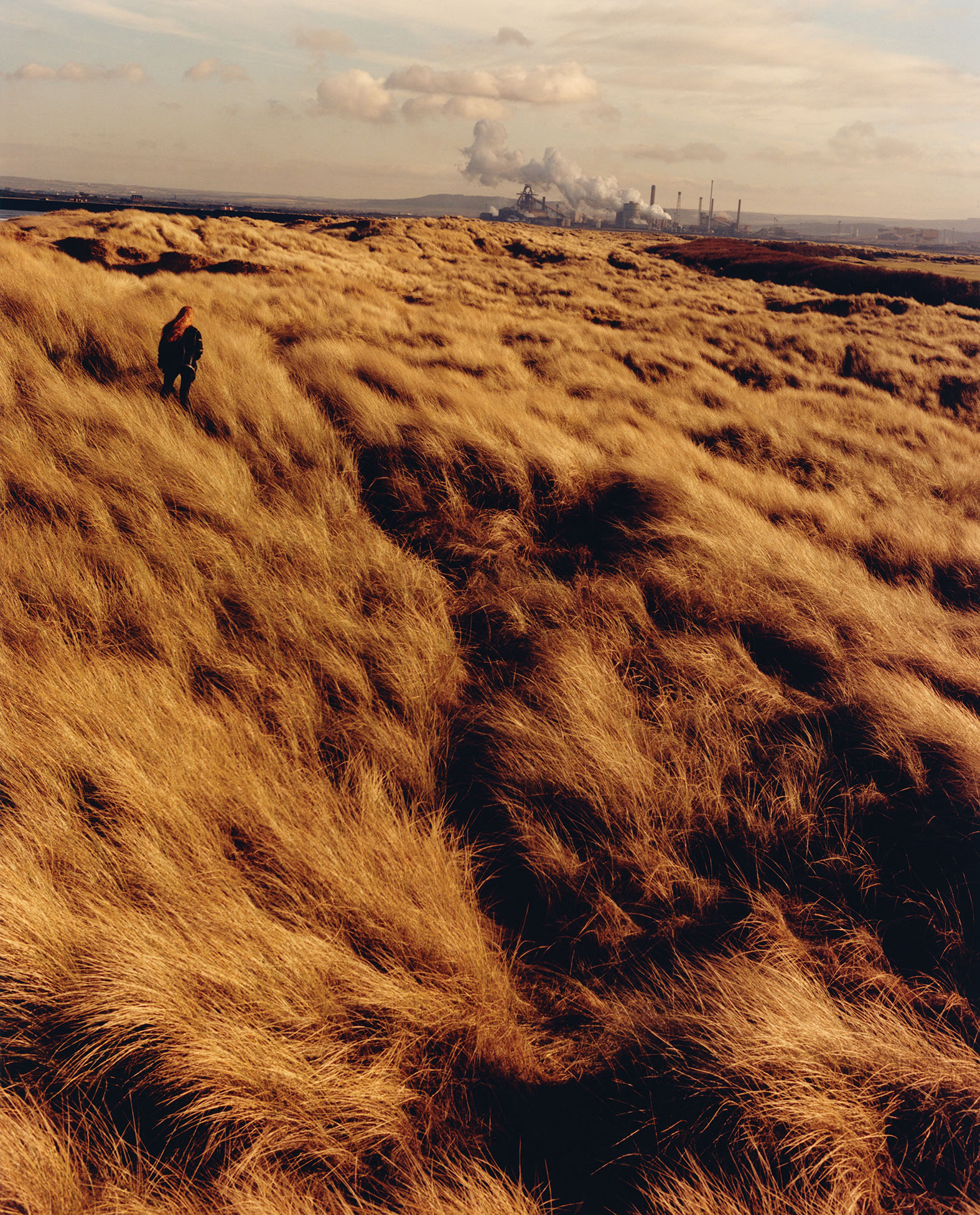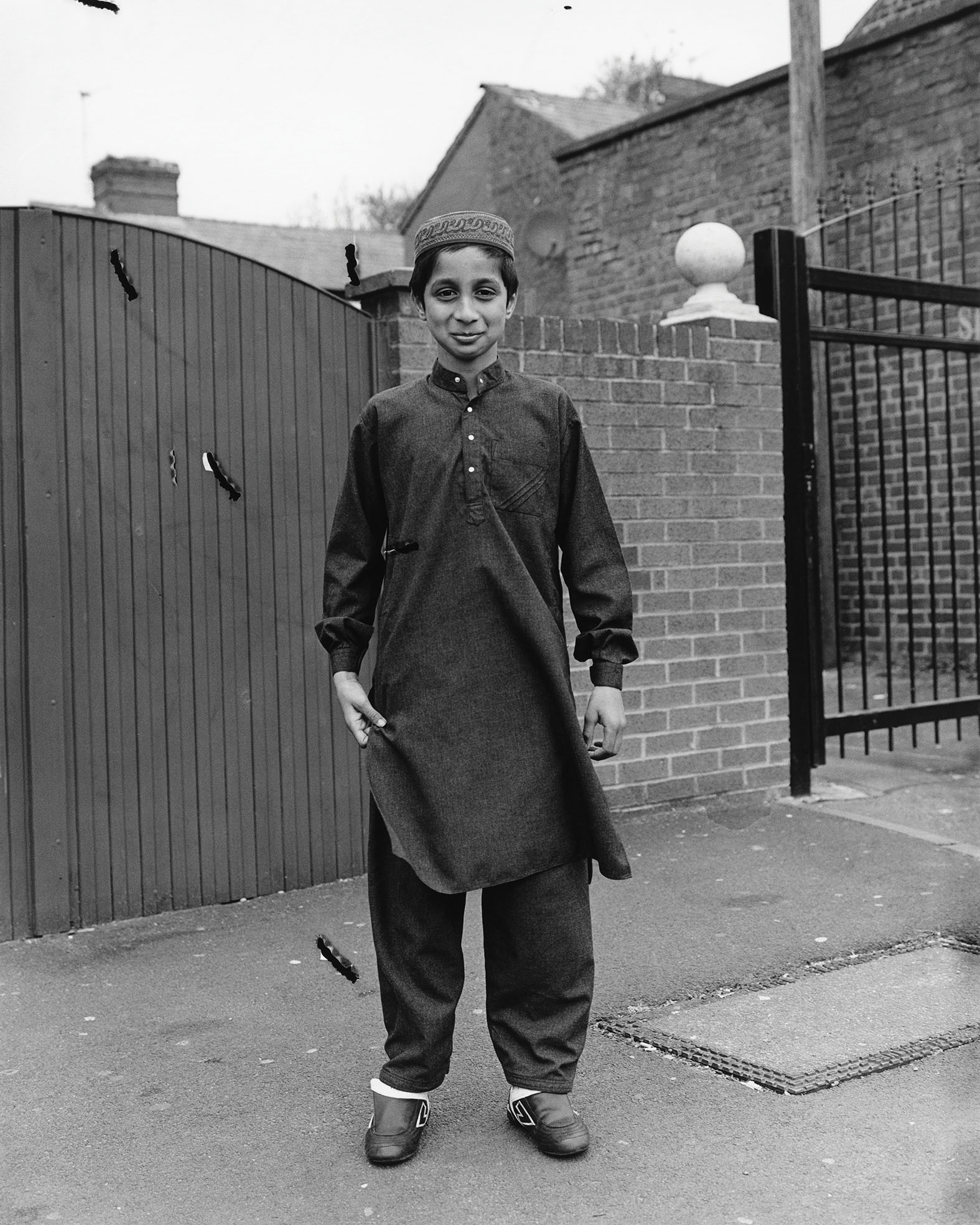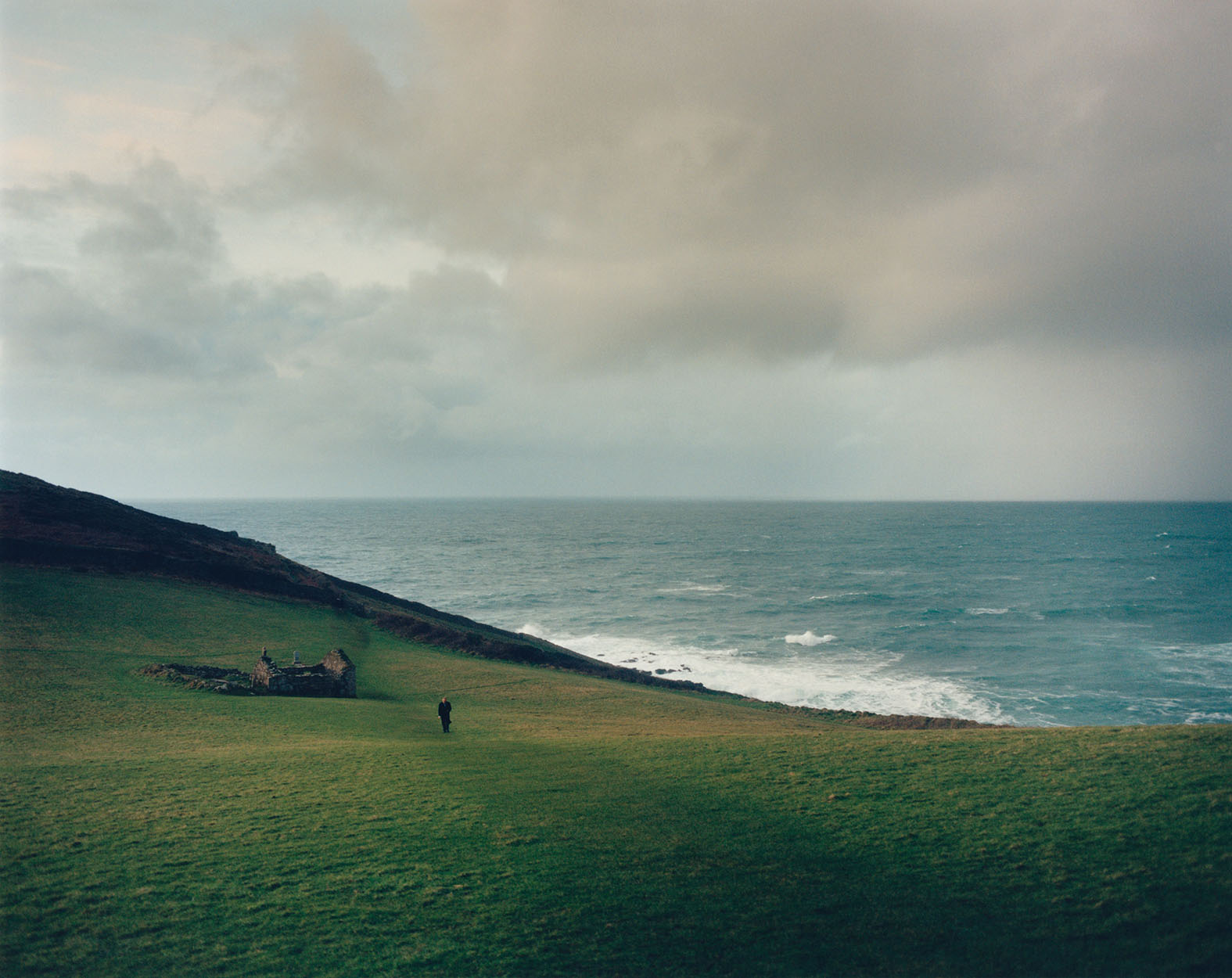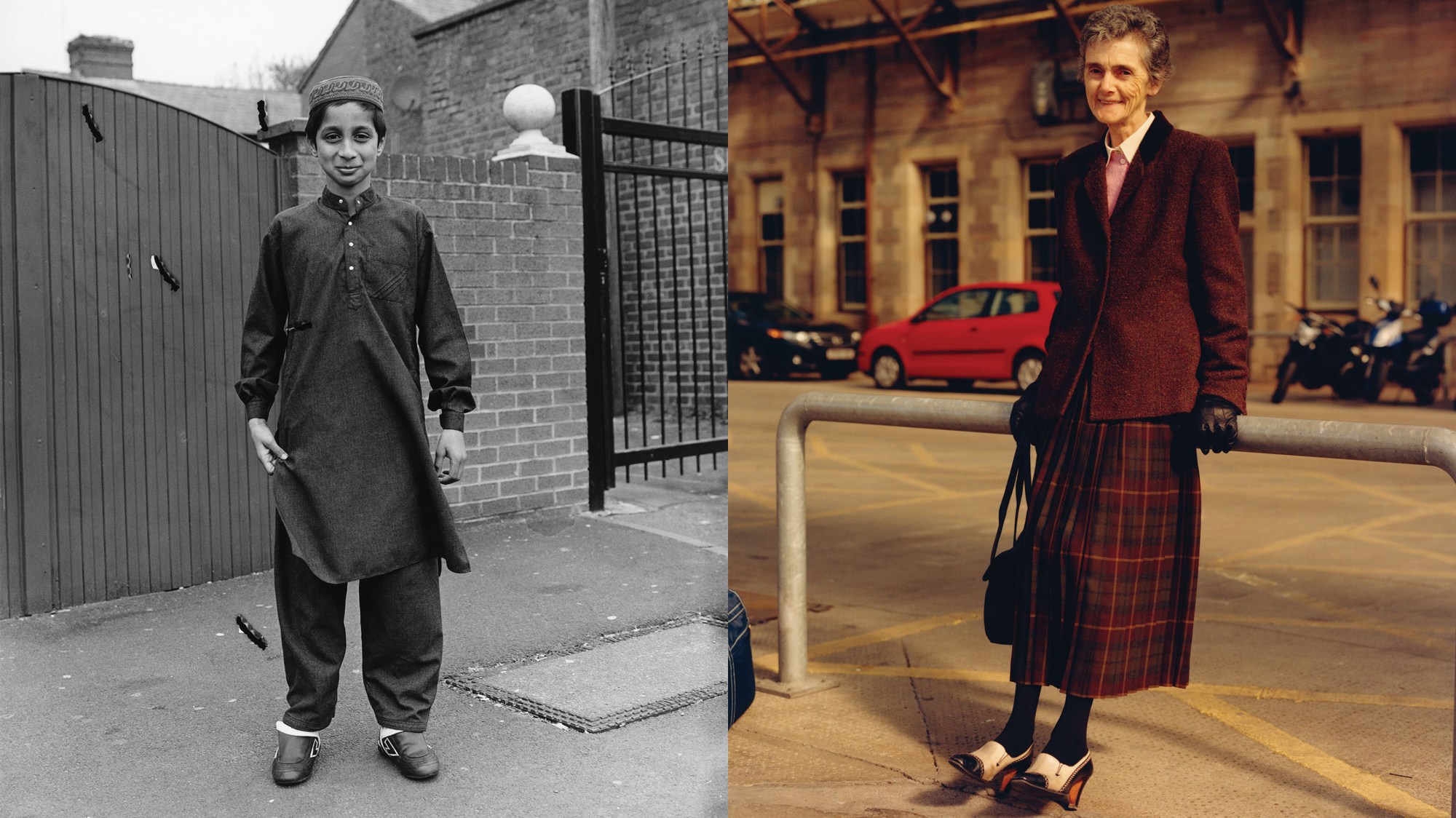“The first place I went was Hartlepool; I just liked the way the word looked on the board at the train station,” Jamie Hawkesworth says, recalling how The British Isles – the photographer’s latest monograph, spanning 13 years of similarly semi-impromptu trips – initially took shape. “It was a very simple idea where I would set myself tasks, going away every weekend; I would just turn up to King’s Cross or Euston and pick a place I hadn’t been. It kind of put a fire in my belly, to really explore what’s basically my home, and just see what’s around.” Travelling all over the country, from the aforementioned County Durham town to as far north as he could get (the Shetland Islands was another one of his early excursions), Jamie accumulated over 1,000 portraits and a mammoth collection of landscapes, edited to 304 pages in the new volume published by MACK.
Born in Ipswich, Jamie arrived to photography comparatively late, first studying forensic science and criminal investigation at Preston University. He switched to the photography course after just a year. One of his most prominent and earliest works is the Preston Bus Station series, from which the warm glow that underscores his aesthetic evolved. Now one of the industry’s premier fashion photographers, working with designers like Supriya Lele and Jonathan Anderson – as well as shooting Gigi Hadid and Kate Moss for recent i-D cover stories – Jamie rarely imposes any great distinction between his fashion assignments and the pictures he takes for himself, instead navigating each project with the same curious perspective.
“People were always around,” he adds, returning to his early days shooting strangers on the journey between his flat and university — the preliminary foundations for the book as he describes it, and the way he got to know the camera. “That’s how I started, really. I never set out to do a portrait of the British Isles; it was more that I was curious and I really enjoy approaching strangers.”
The formal concept for the book itself was born two years ago out of a desire to print the work he’d been sitting on, while the last 15 months of lockdowns provided the time and space. “I had all of these boxes I’d never really explored before. And then I quickly realised, almost by mistake, I’d sort of managed to explore all the British Isles over these 13 years.” Time, he observes, has transformed his opinion on a lot of what he found. “Looking at pictures I took 10 years ago; there are so many portraits in the book that I never would have printed. Your sensibility at that particular point is so different, and the way I look at pictures now is so different; I think that’s been the joy of the book.” Here, he shares six of his most significant images.

1.
This is Hartlepool, one of the first places I went to. It sounds really silly to say, but it was so nice just to go to the train station and see the word Hartlepool and not know anything about it; just be attracted to that place because of the way the word looked, and go there with no expectation, no idea of what I was going to find. The simplicity of that – I felt so inspired. So that picture opens the book simply because it reminds me of going on a trip and being excited to take photographs, [which is at] the heart of the book. That’s quite an important one.

2.
If you look at the picture, there are these black holes in the actual image, and that was because it was one of the first black-and-white rolls I’d processed. I remember my uncle coming up to meet me when I changed course to photography, and I couldn’t stop talking about processing film and actually being physical with something — processing it, drying it and then printing it — I just couldn’t shut up about that process. So I left those marks in because it reminded me of processing film for the first time.

3.
I remember coming off the train, and I was like, ‘Right, I’m just going to jump off the train and see who I come across at the station’, and there was this woman standing there, and she had this incredible outfit on but her feet… Basically, she made this incredible gesture where her feet kind of lifted off the ground. [It] sounds cliché, but it’s what I can imagine a 14-year-old would do, but to see this 90-year-old — she looks about 90 — make this really amazing gesture, it always reminds that all you have to do is just observe people and they do the most incredible things. This very simple gesture of just lifting your toes completely transforms the photograph, so it reminds me to appreciate these very normal gestures, [as they] can become quite extraordinary.

4.
I was in Newcastle, and I was walking around. I hadn’t found anyone for ages. When you approach strangers to take their portrait, it’s such a buzz and quite an adrenaline rush, however when you don’t find someone for a very long time it can become quite frustrating and very hard work. I remember sitting on a wall, thinking, ‘What am I doing in the middle of nowhere doing these portraits?’, and then suddenly this pram came rolling down the hill with this candyfloss on it. It was the most extraordinary surreal moment. It reminded me that it’s not just about portraits, it’s just about walking around and being in the now, and the most extraordinary things can happen.

5.
He’s walking away from the coast in a place called Cape Cornwall. I went there two years ago — I went down to St. Ives and spent a month there, walking around — and it’s again one of those things, just walking with the camera. Seeing an epic landscape like that just blows my mind. You’re walking and not finding anything, and then suddenly there’s this guy out of nowhere who just walks out. Obviously, when there’s not anyone in the landscape, that’s really nice but, when someone walks into a landscape, it can completely transform the feeling and narrative of that place. I guess in that particular moment, the idea of this guy walking away from the coast back into the country felt really impactful somehow.

6.
She’s kind of sitting on the platform waiting to catch the train and eating a sandwich; it’s an extremely normal photograph and so familiar to me. I remember every time I’d go away, when I’d leave my flat, I’d always pack a sandwich — it sounds very simple — but just to appreciate someone else having a sandwich on the platform was quite amazing at the time. And it made it in the book. I mean, it’s a bit like the candyfloss, but in a very different way. It’s just appreciating the very normal things, and then once you put that in the context of the book, it kind of becomes, I think, a very touching moment. Everyone’s so familiar [with] waiting for the train and just sitting on the platform until it comes, just having a sandwich and a cup of tea, so it’s a nice moment.
Credits
All images Jamie Hawkesworth from The British Isles (MACK, 2021). Courtesy of the artist and MACK.


